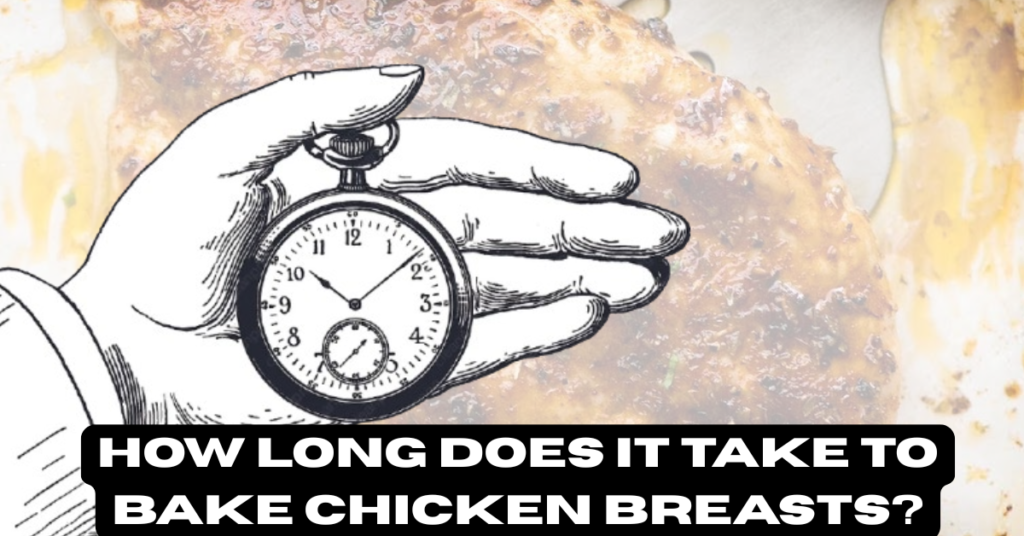I used to struggle with dry chicken breasts until I discovered these game-changing techniques. Trust me, this method transformed my weeknight dinners completely! The first time I tried this approach, my family couldn’t believe the chicken was baked, not restaurant-bought.
The secret lies in a few simple steps that prevent the dreaded dryness most home cooks face. After years of testing different temperatures and methods, I’ve finally perfected this recipe that delivers juicy, flavorful results every single time.
Ingredients You’ll Need
It doesn’t take much to achieve this tender, juicy, and super delicious oven baked chicken breast recipe. What you need here is:
Chicken Breasts:
I am taking three boneless, skinless, chicken breasts. You may scale this recipe up or down as per your desired servings number.
Olive oil:
Olive oil prevents the chicken from becoming dry and facilitates the sticking of the seasoning onto the chicken breasts.
Seasoning:
This is where you get creative and experiment. I’ve tried many different blends and my favorite is a blend of Italian seasoning, garlic powder, onion powder, paprika, salt and black pepper. It adds wonderful flavor to the chicken! If you prefer your own store-bought seasoning packet, you can use that as well. What is most crucial are the cooking methods and recipe tips I’ll be listing below.
How To Cook Baked Chicken Breasts

Let’s get cooking! Pull your chicken from the refrigerator about 20 minutes before baking to take the chill off – cold chicken cooks unevenly. Place each breast between plastic wrap and pound to an even ¾-inch thickness using whatever heavy object you have (rolling pin, wine bottle, heavy pan).
This uniform thickness prevents overcooking thin spots while waiting for thick parts to finish. Pat those breasts completely dry with paper towels – moisture is the enemy of good browning! Mix your olive oil with seasonings until it forms a paste-like consistency, then massage it thoroughly into every part of the chicken.
Don’t just drizzle – really work it in! Arrange on a baking sheet with a little space between each piece for proper heat circulation. Let them sit with the seasoning for approximately 15 minutes if you can – this brief delay lets flavors penetrate deeper.
How Long Does It Take To Bake Chicken Breasts?

I’ve tested countless temperature and time combinations over the years. My perfect formula? A 425°F oven for about 18 minutes for standard-sized, pounded breasts. But here’s what most recipes don’t tell you – size matters tremendously! Smaller, thinner pieces might need just 15 minutes, while larger ones could require up to 22 minutes.
The real test isn’t time but temperature – you’re aiming for 165°F in the thickest part. Last night I baked two seemingly identical breasts, and one was perfect at 17 minutes while the other needed 20! This is why cutting cooking times isn’t worth risking undercooked chicken or relying solely on the clock.
One more tip I learned the hard way: chicken continues cooking after you remove it from the oven. I now take mine out at 160°F, cover it loosely with foil, and let the temperature climb those last few degrees during resting.
Recipe Tips For Success!
After countless chicken dinners (and a few memorable failures), I’ve collected these non-negotiable tips. First, never skip pounding – I once tried rushing by skipping this step and ended with chicken that was simultaneously overcooked and undercooked.
Brutal! Season more generously than you think necessary; chicken breast is mild and needs the flavor boost. Try my 15-minute quick brine trick: dissolve 1 tablespoon each of salt and sugar in warm water, add chicken, and refrigerate briefly for dramatically juicier results.
Resist the urge to constantly check your chicken – each oven opening drops the temperature by about 25 degrees! When the chicken comes out, immediately tent it with foil but don’t seal tightly or you’ll create steam that softens your perfect exterior.
Last night, I turned the browned bits left in the pan into an amazing sauce by adding a splash of white wine and some broth – it took an ordinary chicken dinner to weekend-worthy status in just two extra minutes.
READ FOR THIS BLOG: What is Cryptocurrency? How Can Beginners Start from Zero Full Guide
Storing Leftovers
Let’s be practical – we’re busy people who need good food all week long. Cool your chicken completely before refrigerating (but never leave it out longer than two hours for safety reasons). I store mine in glass containers rather than plastic bags because I’ve found they protect the moisture better.
Good chicken will keep 3-4 days in the fridge, so I tend to make a double batch on Sundays for instant meals during the week. When freezing (which, amazingly, works), I wrap each piece in parchment first and then put them in freezer bags to keep from sticking together.
The absolute best reheating method I’ve discovered? Slice the cold chicken before reheating and warm it gently in a covered skillet with a tablespoon of chicken broth. Microwaving works in a pinch but always leaves the edges rubbery – a sacrifice I make only on the busiest workdays!
Serving Suggestions
The convenience of well-cooked chicken breast is my weekly meal prep staple. I served it last night with roasted sweet potatoes and a kale salad for a healthy dinner that required little effort. Today, I used the leftovers to slice over mixed greens with avocado and a light vinaigrette for lunch.
When I’m hosting this weekend, I’ll crown each slice with a pat of pesto, diced tomatoes, and melted mozzarella for an Italian feast that never fails. The kids enjoy it when I shred it and serve it quickly as quesadillas with a bit of cheese and those pre-made guacamole cups from the grocery store (no judgment here – we’re all busy!).
The flavorless flavor profile works well with robust sauces such as chimichurri, BBQ, or simply a lemon-butter squeeze. I’ve forgotten the number of weeknight dinner crises this recipe has saved me from through the years.
FAQs About Baked Chicken Breast
How do I know when baked chicken breast is done?
I rely exclusively on my meat thermometer, which should read 165°F in the thickest part. Visual cues can be misleading – I’ve cut into seemingly done chicken only to find pink in the center, ruining both the presentation and juice retention.
Should I cover chicken breasts when baking?
I bake mine completely uncovered which allows the exterior to develop that gorgeous golden color and slight crust. Covering creates steam that makes the chicken pale and sometimes rubbery – I learned this mistake after years of using foil!
How can I make sure my baked chicken breasts stay juicy?
The combination of pounding to even thickness, not overcooking (use that thermometer!), and allowing proper resting time creates the juiciest results. I never skip any of these steps, even when I’m rushing to get dinner on the table.
Can I use frozen chicken breasts for this recipe?
Although you can do it technically, I highly advise thawing out first. I’ve attempted cooking from frozen several times, and the outcomes were vastly worse – dry exteriors, dubious interiors, and extended, unreliable cooking periods.
What’s the best way to reheat leftover baked chicken breast?
Cut the refrigerated chicken, then reheat it lightly in a covered skillet with a spoonful of chicken broth. This process replenishes moisture without allowing that rubbery, microwave texture that destroys good chicken.
Conclusion
Following years of cooking dry, tasteless chicken breasts, mastering these fundamental methods transformed my everyday cooking. The method isn’t difficult, but each step is crucial to building chicken that is flavorful, juicy, and adaptable.
I’ve passed this method along to many friends who were amazed at how small changes created such dramatic results. Whether you’re meal prepping for a busy week or serving dinner to impressed guests, mastering properly baked chicken breast gives you a reliable protein base for endless meal variations.
The best part? Once you’ve done it a few times, the process becomes second nature, requiring minimal effort while delivering consistently excellent results that will make you wonder why you ever struggled with dry chicken in the first place.

Jon is a seasoned SEO expert with a passion for content writing, keyword research, and web development. He combines technical expertise with creative strategies to deliver exceptional digital solutions.










